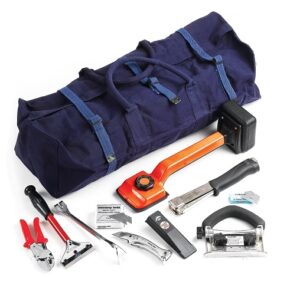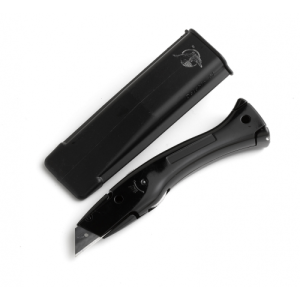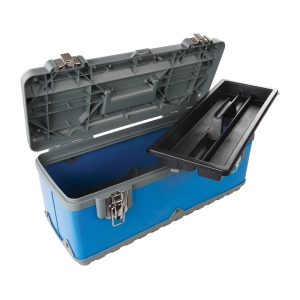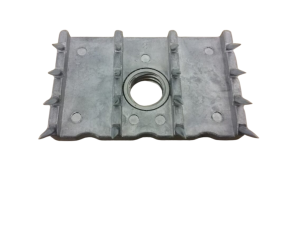Tool Maintenance Tips: Keeping Your Flooring Tools in Top Condition
You’re only as good as your tools.
Ask any experienced floor fitter and they’ll tell you – your tools are as important to the job as your skill. Well-maintained tools cut cleaner, measure straighter, and apply materials more precisely, saving you time and avoiding costly mistakes. A dull blade, a clogged seam iron, or a misaligned tape measure can slow you down and compromise the quality of your work. Flooring Tool Maintenance is an essential trade skill, so embed it in your work routine.
Without proper tool maintenance, you’ll have to replace items more frequently, or risk damaging materials, providing a poor finish and disappointing your customers. By contrast, good flooring tool maintenance keeps every tool performing at its best, saving you money and protecting your flooring reputation.
What Types of Flooring Tools Need Maintenance?
- Cutting tools
- Carpet knives, vinyl cutters, shears, and saws, all require regular sharpening, cleaning, and safe storage. For hacksaws and trimming tools, replace blades regularly – for professional floor fitters this may be every 1-2 weeks, while for DIY jobs it may be less frequent
- Measuring and marking tools
- From tape measures to laser levels, protect tools that require accuracy from knocks and crushing. Check alignment regularly and oil as needed.
- Adhesive and seaming equipment
- Clean glue guns, seam irons, rollers, and spreaders immediately after use. It’s much quicker to clean these tools while the adhesive is still liquid than waiting until later, and it’s not worth delaying your next job to try and remove hardened cold-weld fluid.
- Stretchers, rollers, and fitting tools
- Adjust knee kickers and floor rollers every week. Tighten any bolts and inspect them for wear and tear. You may also need to remove fibre build-up from the pin plate to keep carpet kickers working effectively.
General Care Tips
Cleaning Routines for Flooring Tools
Always remove adhesive, dust, and debris at the end of each day. Use a soft cloth and a cleaner suited to the material – for example, mild detergent for plastics and specialist cleaning fluid or oil for metal components. A quick wipe-down can prevent corrosion and keep moving parts operating smoothly.
Protecting Against Rust and Corrosion
Moisture is the enemy of any metal tool, especially blades and sanders. On damp job sites, such as cellars, store your tools in sealed cases or bags with silica gel packs. Apply rust inhibitors or protective sprays once a month, especially to cutting edges and hinges. If a tool gets wet, dry it thoroughly before putting it away to stop rust forming.
Lubrication for Moving Parts
Stretchers, seam rollers, and certain cutting tools benefit from occasional lubrication. Use a light machine oil or silicone spray whenever they start to stick, but avoid overdoing it: too much lubricant can attract dust and grit, which wears down parts faster.
Seasonal Tool Maintenance
In winter, condensation can damage tools stored in cold vans or garages. The moisture that condenses on blades or hinges can lead to corrosion. Keep them in insulated cases or bring them indoors overnight.
Before busy installation periods, usually spring and summer in flooring, inspect, oil and tighten all tools to get them ready for constant use.
Safety Checks Before Every Job
Look for cracks, frayed cords, loose blades, or bent fittings before you start using a tool. Damaged tools aren’t just inefficient – they’re dangerous. Repair and replace faulty parts to protect yourself from accidents and to make sure the work is done well.
Keeping an Inventory and Maintenance Log
It’s a good idea to keep a log-book to record when you service your tools, change blades and make repairs. This helps keep track of how frequently you are having to do this, and helps plan replacements & servicing, budget effectively, and analyse faults. It also means there are fewer surprises when a tool breaks down.
Storage and Transport Tips
Most deterioration and damage doesn’t happen on the job. Apart from blade wearing, the way you store and carry your tools has more impact on their quality than anything else.
Proper Storage Between Jobs
Choose the right storage for your work style – rolling toolboxes for mobility, carry cases for compact kits, or wall racks for workshop organisation. Keep tools organised to prevent damage and ensure quick access.
Always cover blades during storage, whether it’s retracting the blade of a utility knife or using a blade cover for a hacksaw. This prevents them from banging into things and becoming dull.
Make sure tools are not kept in damp or cold conditions, as this can lead to rust or corrosion forming on metal surfaces, and mould growing on tapes, gloves and kneepads.
Transport Tips to Prevent Damage
Secure large tools and toolboxes in your vehicle with straps or racks to prevent them from rolling around and getting damaged.
Precision tools benefit from dedicated protective cases that prevent jolts and scratches during transport.
Specific Tools
Calibrating Measuring Tools
Moisture metres, laser levels and gauges must be accurate. Test them regularly, recalibrate when possible, and replace them if readings drift. Even small errors can lead to poor flooring fits.
Adhesive and Seaming Tool Care
Clean glue guns and spreaders before the adhesive hardens to avoid blockages.
For seam irons, wipe plates while warm (but unplugged) to prevent build-ups of residue that could mark carpet or vinyl.
Extending the Life of Stretchers and Knee Kickers
Check pins, pads, and springs for wear and carpet fibres. Tighten any loose bolts and keep moving parts adjusted for smooth, accurate stretching. Lubricate as needed.
Replacement pin plates and nap grips are useful if pins break. You can also replace buffer heads if these wear down and become uncomfortable to use.
Use a wire brush to clean the nap grip of fibrous buildup.
Maintaining Power Tools
Regularly inspect cords, plugs, and batteries.
Clean vents to prevent dust build-up, which can overheat motors.
Store batteries in cool, dry places, and avoid leaving chargers plugged in unnecessarily, as this can reduce the battery life dramatically.
Blade Care and Replacement
Replace dull blades promptly: a sharp blade is both safer and cleaner. If using reusable blades, learn proper sharpening techniques. Store replacement blades in protective cases to prevent injury or edge damage.
Signs Your Tools Need Professional Servicing
If a tool is no longer accurate, safe, or reliable, even after cleaning and adjustment, it may need professional servicing or even replacement. Use trusted flooring tool suppliers to source parts or quality replacements.
Tools That Last for Work That Lasts
Looking after your tools is part of looking after your reputation. Well-maintained carpet fitting tools, vinyl tools, and floor preparation equipment help you deliver precise, professional results on every job.
Treat your tools with the same care you put into your installations, and they’ll serve you well for years to come.
It is easier to maintain quality flooring tools than cheap disposables. Choose high-quality tools to start with, and you’ll be investing in your floor fitting business to save time and money later on.








